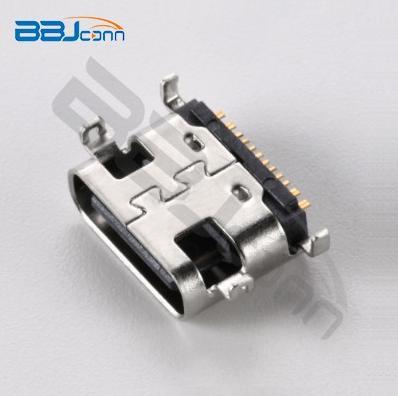Development and transmission speed of TYPE-C
发布时间:2023-02-16作者:Shenzhen BBJ technology co., LTD点击:736
With the size of electronic products becoming thinner and thinner, the data interface we use is also becoming thinner and thinner. Many old interfaces were also eliminated because of the thickness of electronic products. Many of the interfaces we see now are basically smaller versions, such as HDMI with mini-HDMI and microHDMI, and USB with mini-USB and type-C.
In terms of interface shapes, although each Type-C popular science article should list a lot, in fact, the commonly used USB interface shapes are mainly divided into USB-A/B/C interfaces:

TypeA: that is, our common standard USB big mouth. The mainstream can be divided into USB2.0 speed (tens of M/S) and USB3.0 speed (hundreds of M/S). In fact, a small number of Typea are USB3.1 10Gbps speed, which is common on new desktop motherboards.
TypeB: It is commonly used in printers and displays with touch and USB interfaces, and its daily use frequency is low. Type-A's USB 3.0 and 2.0 have the same shape, and the devices can be compatible with each other, but Type-B is different. The wiring of version 2.0 of Type-B can be plugged into version 3.0 of the interface, but the other way around.
Type-C: Today's protagonist, the charging/data interface of most mobile phones at present, some of them are also the earphone interface (LeTV, Xiaomi) and video output interface (Huawei Mate10, Samsung S8/S9, Lumia950, Nut R1, Pro2S). At the same time, it is also the main interface of Apple's new notebooks after the 2015 12-inch Macbook.
Compared with the traditional USB interface, the interface form of Type-C is exactly the same in front and back, because it will not be inserted wrongly no matter how it is inserted into the interface. Compared with the same slender MicroB series interface, the interface is simpler and the failure rate is reduced.
Secondly, compared with other A/B interfaces, there is no Mini/Micro in USB-C, and all C-type interfaces are unified in shape and highly versatile. However, this premise is that TYPE-C equipment is popular enough, otherwise it will add chaos.
Although USB has been developed for a long time, only USB2.0, USB3.0(3.1 Gen1) and USB3.1 Gen2 exist in the current mainstream and in the Type-C interface. The data interface of most mobile phones we used in the past and now is basically the speed of USB2.0 standard, and the theoretical bandwidth is 480Mbps. The process of converting it into MB/S speed unit is as follows:
480÷8? 0.8=48 MB/S multiplied by 0.8 is the transmission loss value of 8bit/10bit. Without considering the finer error, we use this method uniformly for everyone's intuition. Speaking of USB2.0, many people's old-fashioned USB flash drive 2.0 is now. Therefore, when copying data to a computer, reading and writing will generally not exceed 40M/S, and copying large files is very uncomfortable.
And USB3.0 (which was later forced to be classified as USB3.1 Gen1 series) was born, and its bandwidth was increased to 5Gbps:
Finally, from the 2.0 and 3.0 interfaces of MicroB, we can see that the traditional USB interface will present different external forms under different bandwidths and definitions due to the need of pins. The TYPE-C interface will not change regardless of the USB2.0 speed or 3.0(3.1Gen1), 3.1Gen2 and the whole interface shape.
- 上一篇:步步精科技邀您出席2023(春季)亚洲充电展
- 下一篇:Type-c母座优势概述